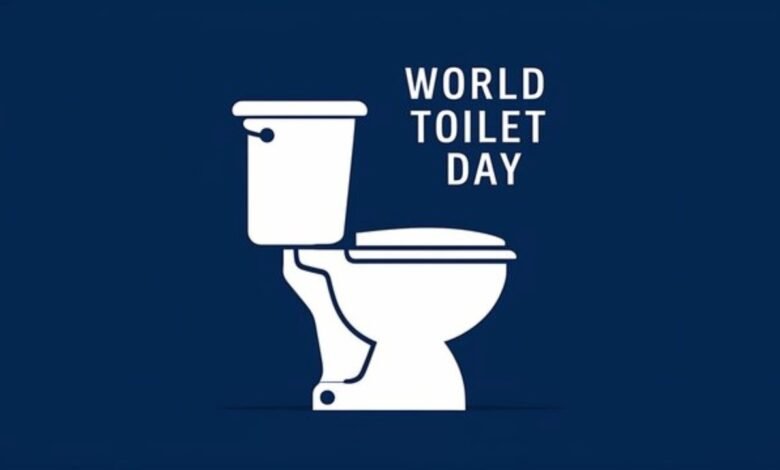World Toilet Day 2025: Protecting Health, Dignity, and the Environment

Every year on November 19, World Toilet Day is commemorated to raise awareness about the global sanitation crisis and the pressing need for accessible, safe toilets for all. The day highlights how essential toilets are, not only for public health and human dignity, but also for environmental protection.
Despite global progress, millions of people still lack access to safe sanitation, exposing children and communities to disease, contamination, and dangerous living conditions.
Theme of World Toilet Day 2025
This year’s theme, “Sanitation in a Changing World,” calls attention to the urgent need for toilets and sanitation systems that can withstand today’s realities, climate change, extreme weather, population growth, and aging infrastructure.
While everyone deserves the dignity of a safe toilet, nearly half of the global population still does not have access to one in 2025. The theme serves as a reminder that sanitation systems must be:
- Climate-resilient (able to survive floods, droughts, and extreme events)
- Accessible to everyone, including marginalized and rural populations
- Supported by strong investment and infrastructure to protect both people and the environment
It underscores a simple but powerful truth: future-ready toilets are essential for protecting lives and sustaining communities.
History of World Toilet Day
World Toilet Day was first marked in 2001 by the Singapore-based World Toilet Organization, founded by Jack Sim. The aim was to break the silence around sanitation and spotlight the global toilet crisis.
In 2013, the United Nations officially recognized the day, elevating it to a global platform for advocacy.
The UN emphasizes that “our need for safe sanitation will remain constant no matter what lies ahead.” Ensuring that sanitation systems can meet both present and future challenges is now more important than ever.
Key Facts About World Toilet Day (UNICEF & WHO, 2025)
- 3.4 billion people still lack safely managed sanitation facilities.
- 354 million people practice open defecation, increasing disease risks, especially for women and girls.
- 1,000 children under age five die every single day from diseases linked to unsafe water, poor sanitation, and inadequate hygiene.
- If current trends continue, 3 billion people will still lack access to safe toilets by 2030.
- 205 million children attend schools with unusable toilets.
- 427 million children have no access to a functional toilet at school.
A “safe toilet” not only ensures privacy but also manages waste properly, preventing contamination of rivers, lakes, and groundwater. Poor sanitation remains one of the biggest drivers of waterborne diseases like cholera.
Global Sanitation Gap: Where Toilets Are Still a Luxury
Alarming sanitation gaps persist across the world, and Africa remains the most affected continent.
- Niger tops the list, with 65% of its population lacking access to toilets.
- South Sudan (60%) and Chad (63%) follow closely.
- Benin (49%) and São Tomé and Príncipe (42%) complete the top five.
Strikingly, all the top ten countries with the largest percentages of people without toilets are in Africa. The first non-African country on the list is Kiribati, ranking 11th.
These numbers reflect decades of underinvestment, inequality, and challenges posed by climate and conflict.
Why World Toilet Day Matters
The campaign highlights the urgent need for future-proof sanitation systems, ones that are:
- Universal and inclusive
- Low-emission and climate-resilient
- Supported by strong infrastructure and sustainable funding
Sanitation is a fundamental human right, central to public health, environmental protection, and sustainable development. The burden of poor sanitation falls disproportionately on the poorest communities, especially women and girls, who face increased risks of disease, assault, and missed educational opportunities.
Children bear the heaviest impact of unsafe sanitation. Living in unsanitary environments exposes them to severe diseases such as cholera, dysentery, and typhoid fever, which can lead to malnutrition, stunted growth, and sometimes death. Globally:
- Hundreds of children under age five die every day from diarrhoea-related illnesses that could be prevented with basic WASH (Water, Sanitation and Hygiene) services.
- Many children attend schools without working toilets, affecting their health, school attendance, and long-term development.
Without urgent action, millions of children will continue to face preventable risks.
Conclusion
As the world marks World Toilet Day 2025, we are reminded that safe sanitation cannot wait. This is a call to:
- Invest in climate-resilient, future-proof toilets
- Ensure universal access to sanitation services
- Protect the environment and human health
- Uphold dignity for every person, everywhere
Together, we can build a world where no one lives without a toilet, where sanitation becomes a reality for all.





